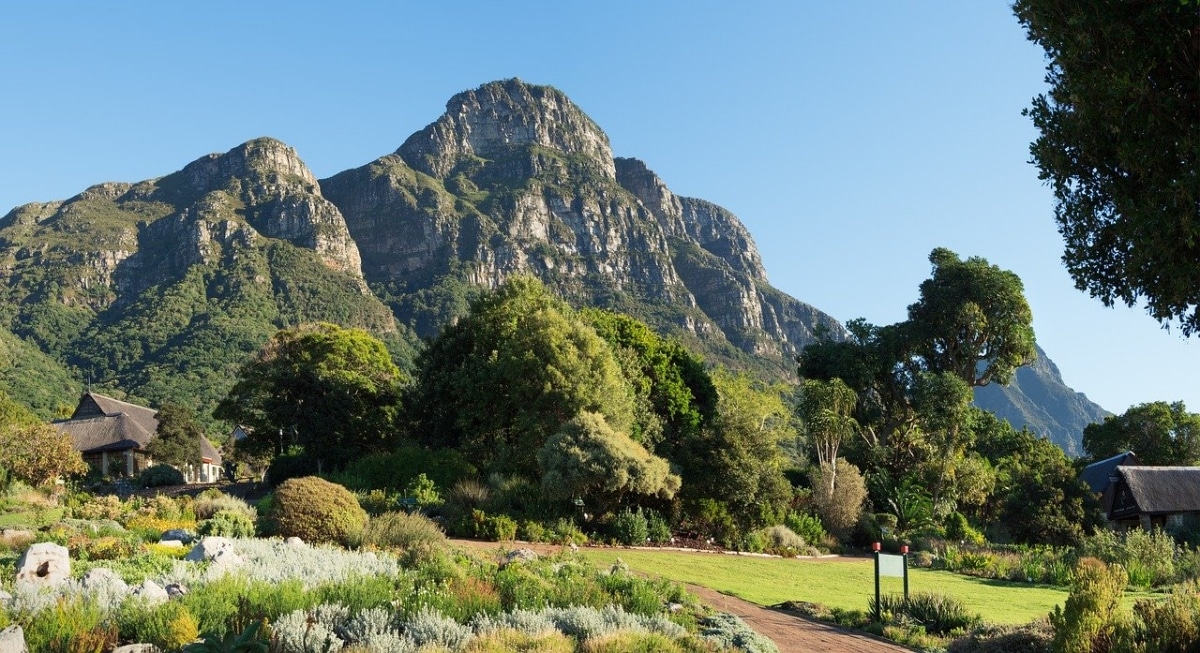
The climate has a significant influence on the growth and development of plants. It is, in fact, one of the factors that determines whether they survive, live well, or die. But It is precisely this that makes the planet have such a diversity of plant species, with mountain climate plants being the strongest and most resistant that exist.. And it is that the conditions in which they live put them to the test every day.
Depending on the distance they are from the equator and the altitude above sea level, cold and frost can last more or less time. In fact, there are some, like the Pinus longaeva, which is one of the oldest trees in the world since it has a life expectancy of about 5000 years, they only grow a few weeks because summer is very, very short. Therefore, we are going to see which plants are adapted to the mountain climate.
How is the mountain climate?
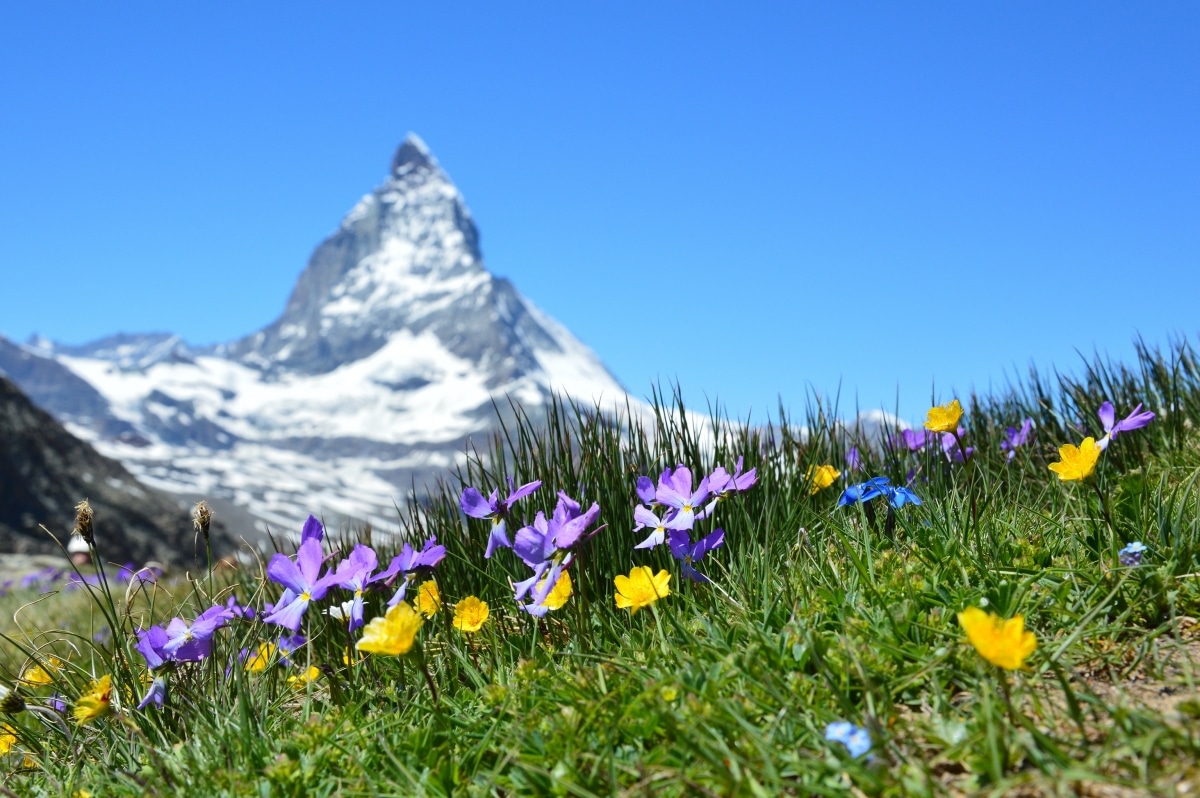
Although before going fully into the subject, we are going to explain a little the characteristics of this climate. As its name suggests, it is a different climate from the one we find at low altitude. The temperature decreases more or less 0,5 to 1ºC every 100 meters, and also, depending on the orientation of the slope with respect to the sun or the wind, it can make the precipitations more frequent and the temperatures milder in a side than the other.
To this we must add the distance that is from the equator. And it is that being the spherical planet, the solar rays arrive before and more straight to the equatorial line than to the rest. Therefore, in places like Mount Kenya (Africa), there can be maximum temperatures of 30ºC or more during the day and drop to -30ºC at night.
That is why we have to talk about ...:
Types of mountain climates
We are not going to get too long. We will only say that they are 5 different, and that they are characterized by:
- Arid or semi-arid mountain climate: temperatures are very high during the day and low at night. The precipitations are very little and the humidity extremely low.
- Temperate mountain climate: it can be humid, sub-humid, tropical altitude, Mediterranean and equatorial mountain. The humidity is high throughout the year, and they can have very rainy summers, or dry if they are in the Mediterranean region.
- Continental mountain climate: it can be humid, continental Mediterranean or high altitude monsoon. The temperatures are cool, and it rains in moderation.
- Subalpine climate: it is a transitional climate between temperate and alpine.
- High mountain climate: it is the alpine and snowy climate. In these there is only one season: winter. The average annual temperature is 10ºC, with frosts of -50ºC or more. In regions where the climate is freezing, such as at the poles, it is practically impossible to find any plants.
And now yes, let's see some ...:
Plants for mountain climates
If you have a garden in a place where the climate is typical of the mountains, these are several plants that you can grow:
Red barberry (Berberis thunbergii 'Atropurpurea')

Image - Flickr / FD Richards
Red barberry it is an evergreen shrub that reaches two meters in height. Its leaves are small and of an intense red color, which is why it is widely used as low hedges to delimit paths for example. It blooms in spring, producing small yellow flowers, and its fruits ripen in autumn, which are edible. It resists frosts down to -15ºC.
European larch (Larix decidua)
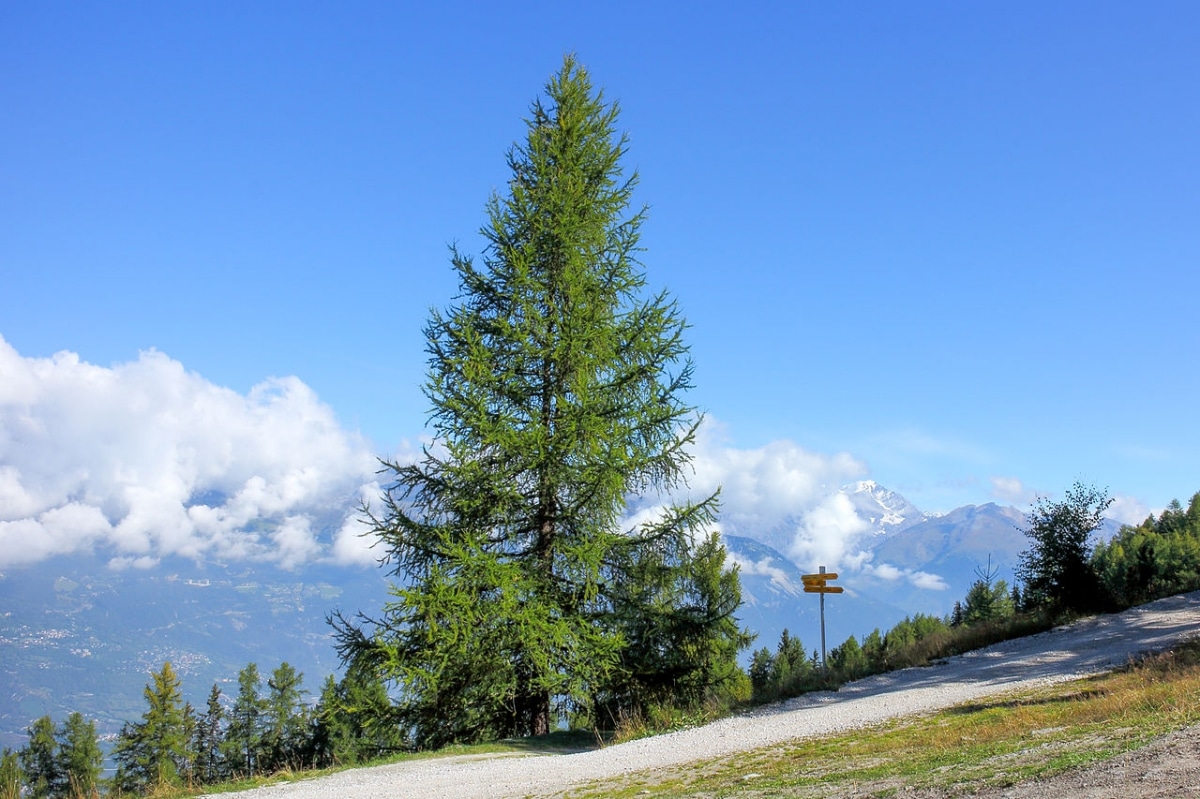
Image - Wikimedia / Dominicus Johannes Bergsma
El larch from europe it is a deciduous tree that grows between 25 and 45 meters in height. It is one of the most resistant to cold, capable of surviving temperatures below -50ºC. In fact, it is found on the arboreal boundary line of the Alps, at altitudes between 1000 and 2000 meters above sea level. But it is also a fantastic tree for mountain gardens, as long as the soil is acidic and has good drainage.
Astilbe (Astilbe)
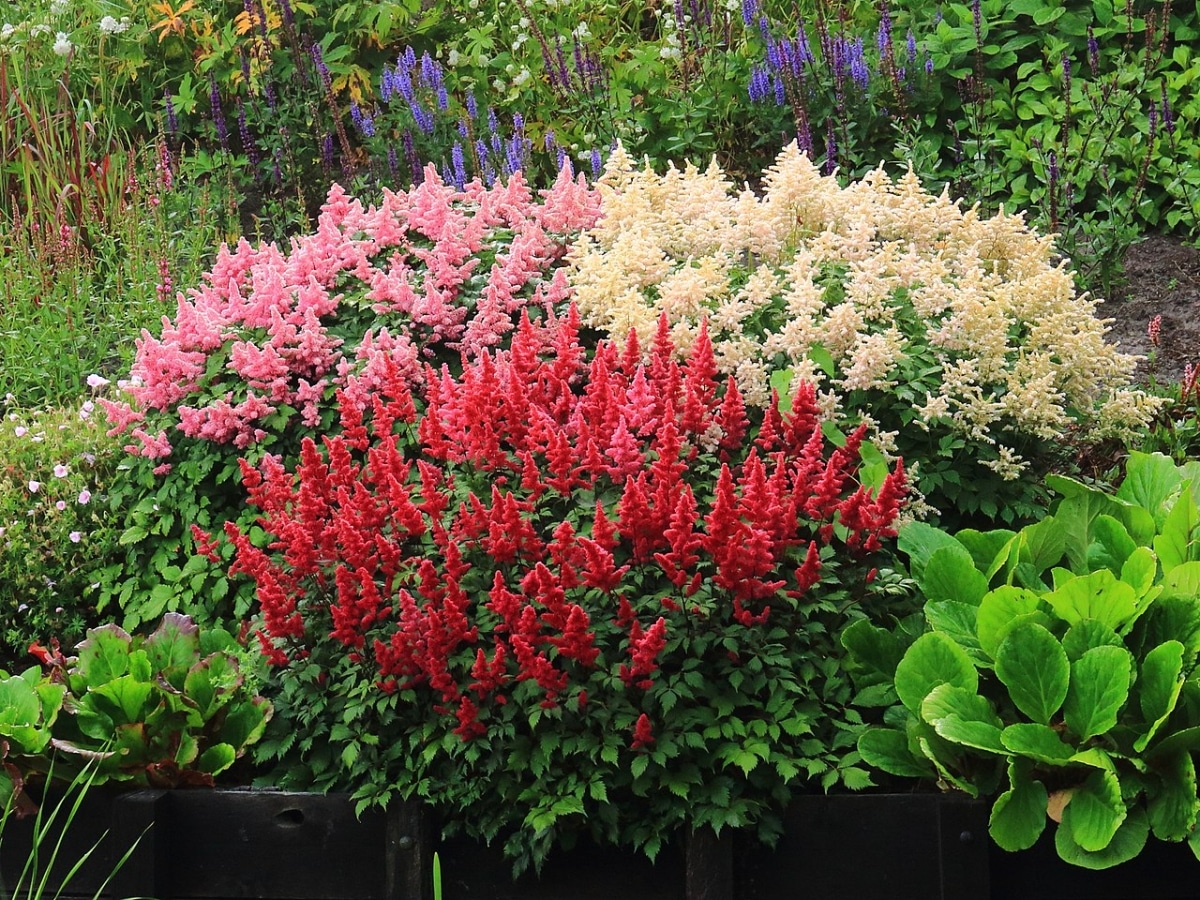
Image - Wikimedia / Dominicus Johannes Bergsma
El astilba It is a perennial herbaceous plant that grows to a height of approximately 60 centimeters to 1,20 meters.. It has compound leaves of green color and with a serrated margin. But the most beautiful thing it has is its flower, or rather, its inflorescence (it is a group of flowers that sprout from a stem, which in the case of the astilbe is about 20-30 centimeters high). This is red, pink, or white, and it appears in spring. It resists frosts down to -20ºC, and needs direct sun for it to flourish.
Snowball (Viburnum opulus)
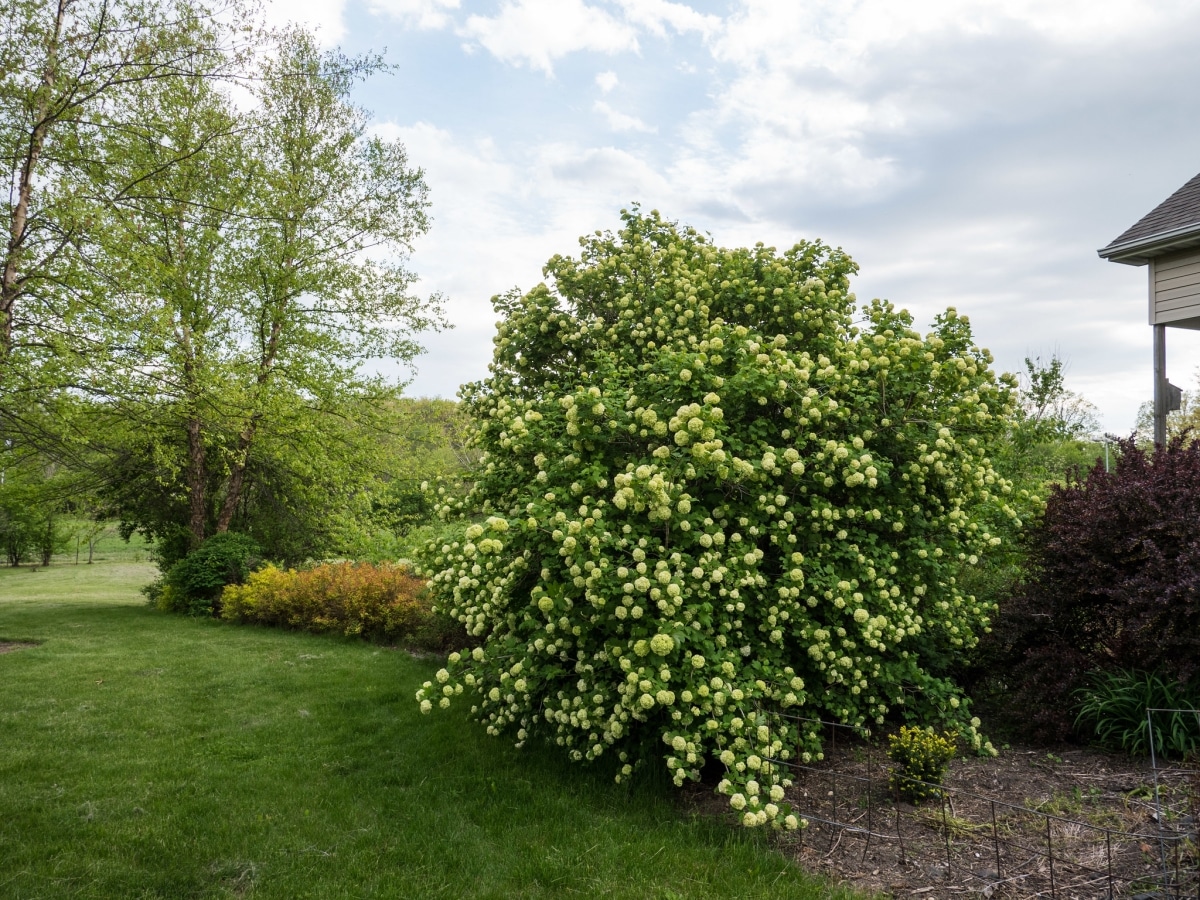
Image - Flickr / FD Richards
The plant known as snowball It is a deciduous shrub that reaches 4 or 5 meters in height at most. It is highly appreciated both in gardens and terraces, as it tolerates pruning, cold and snowfall. In addition, it is very decorative, especially when it blooms, something it does in spring. Its flowers are white, and are grouped in corymbs between 4 to 11 centimeters in diameter. If the right conditions are met, in autumn its leaves turn red before falling, so we recommend planting it in a visible area so that it stands out. Resists up to -20ºC.
Flowering dogwoodcornus florida)

Image - Flickr / carlfbagge
El flowering dogwood or flowery bloodsucker It is a deciduous tree that grows up to 10 meters in height and develops a 4 meter wide crown. The leaves are green, except in autumn when they turn red before falling to the ground. Its flowers are white or pink and are grouped in inflorescences of up to 20 units, making the foliage practically hidden behind them. It blooms throughout the spring, and produces red berries that ripen in the fall. These are not edible for humans, but they are for birds. Also, you should know that it needs acidic soils and a sunny exposure. Resists up to -20ºC.
Charming (Enkianthus campanulatus)
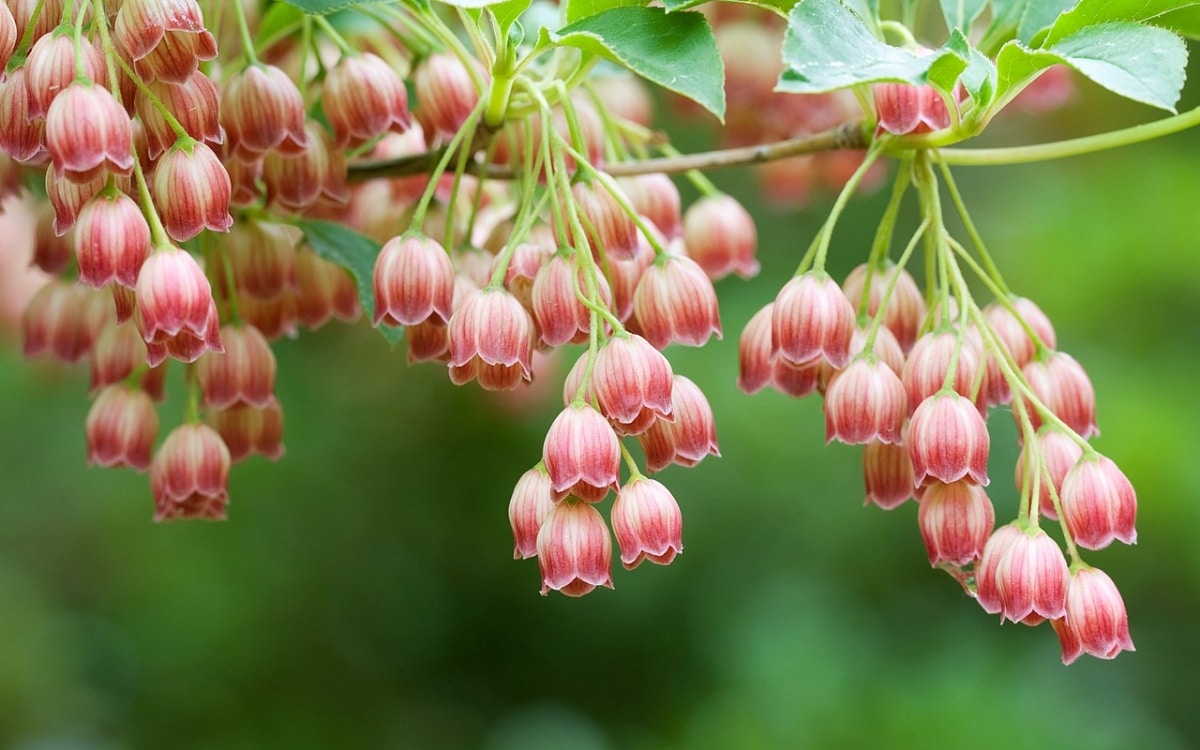
Image - Wikimedia / মুহাম্মদ হাবিবুল্লাহ
The enquianto is an evergreen shrub with bright green leaves that turn coppery in autumn. During spring it produces a large number of white bell-shaped flowers with reddish undersides. Reaches 5 meters in height, but it can be pruned so that it does not grow as much in late winter. It must be planted in acidic soil, in a sunny or semi-shady place. It is very resistant to cold, tolerating frosts down to -28ºC.
Guillomo of Canada (Amelanchier canadensis)

Image - Wikimedia / Rasbak
The guillomo of Canada, also known by the names of cornillo or caraquilla, It is a deciduous shrub or tree that reaches a height of between 1 and 8 meters. The leaves are green, but during the fall they turn a magnificent red color. It blooms in spring. The flower clusters are white, erect and pubescent, and are between 4 and 6 centimeters long. When they are pollinated, they produce fruits of about 10 millimeters in diameter that can be eaten, since their taste is sweet. It resists up to -20ºC, and must be kept in slightly acidic or neutral soils.
Dryopteris fern (Dryopteris erythrosora)
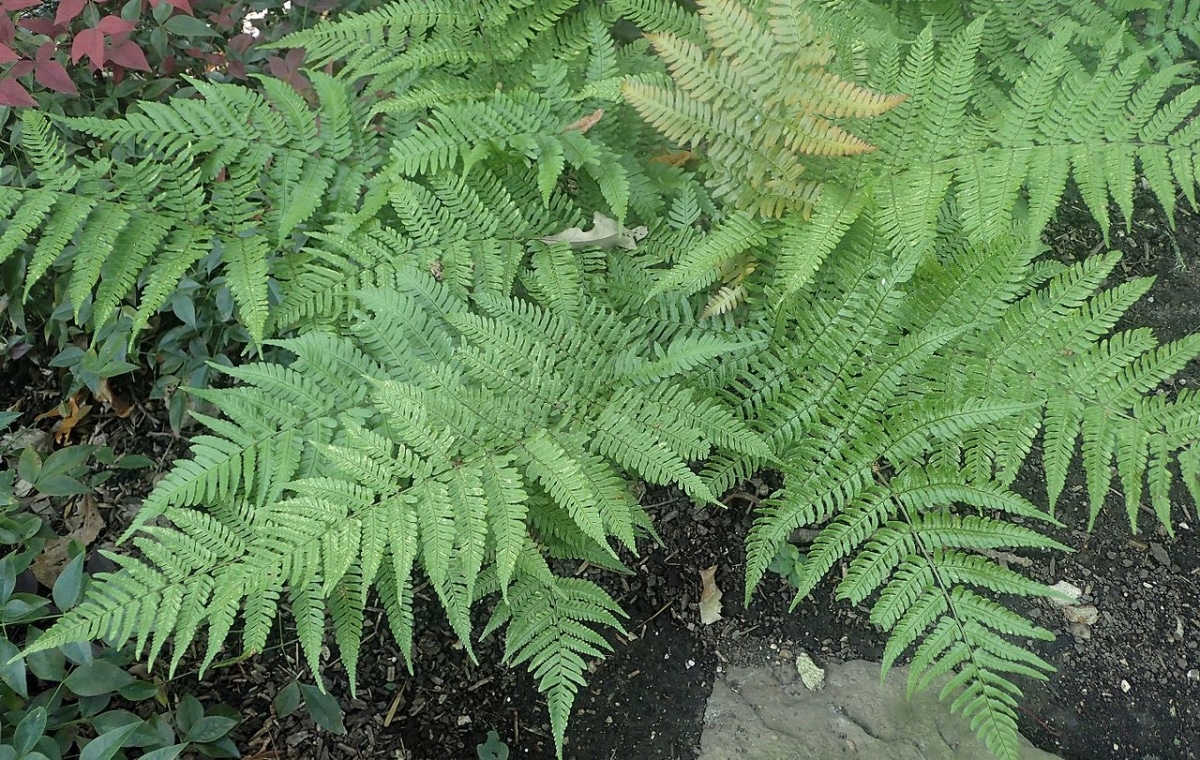
Image - Wikimedia / Krzysztof Ziarnek, Kenraiz
Dryopteris fern is a semi-evergreen herbaceous plant that develops bipinnate fronds (leaves) between 30 and 70 centimeters long by 15 to 35 centimeters wide. These are green, but in autumn they turn reddish. It grows fast, and it is a perfect species to have in shade, since in fact it does not tolerate direct sun. It resists temperatures down to -20ºC.
Gold rain (Laburnum anagyroides)
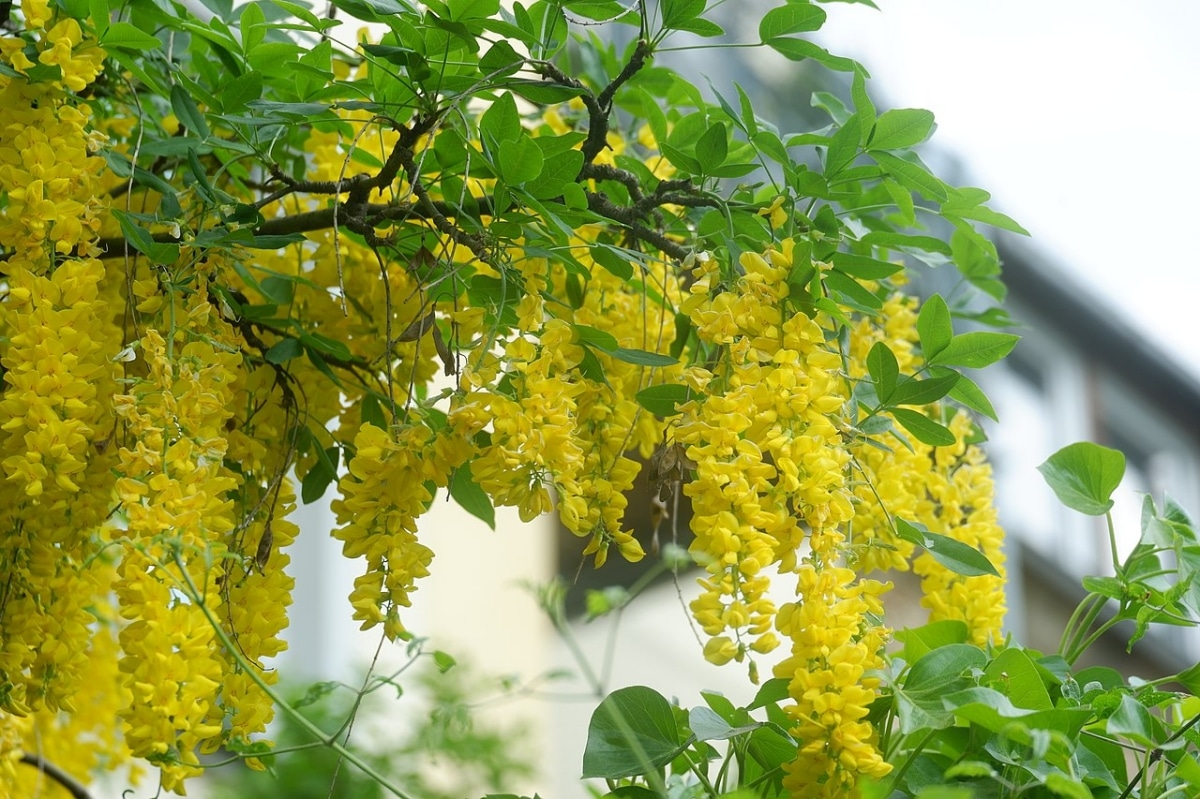
Image - Wikimedia / Katrin Schneider
La Gold rain it is a deciduous tree that reaches 7 meters in height. Its leaves are green, and in spring it produces a large number of clusters of yellow flowers that hang from the branches. Although it is a very beautiful plant, care must be taken with the seeds, as they are toxic to humans and horses if ingested. Its growth rate is fast, and it resists up to -20ºC. Discover how it is sown:
Common Dog Violet (Rivinian viola)

Image - Wikimedia / Franz Xaver
La common dog violet it is a perennial herbaceous plant that reaches a height of 10 centimeters and a width of 50 centimeters. Its leaves are dark green, and are shaped like a heart. It blooms from spring to early summer, and its flowers are purple. You have to put it in an area where it is exposed to direct sunlight, so it can grow properly. It resists frosts down to -20ºC.
What other plants for mountain climates do you know?